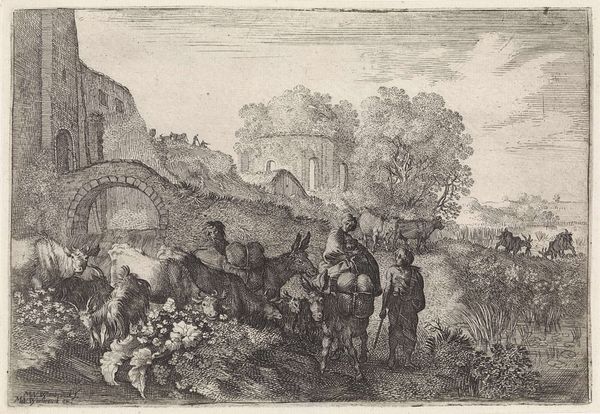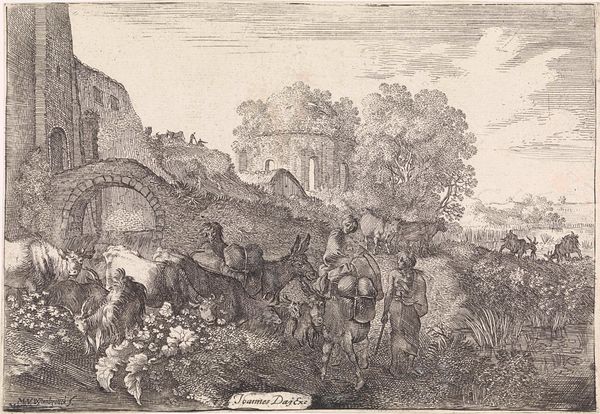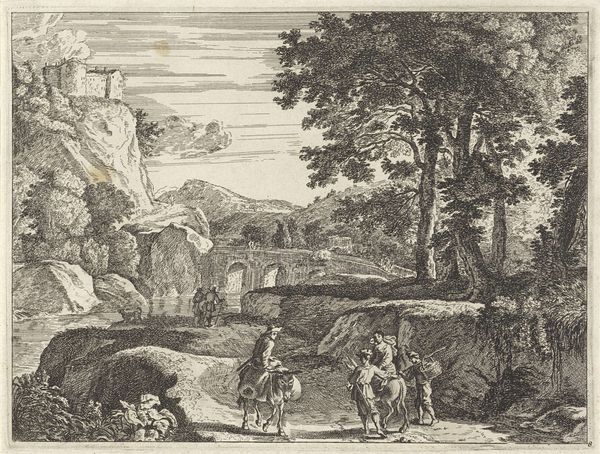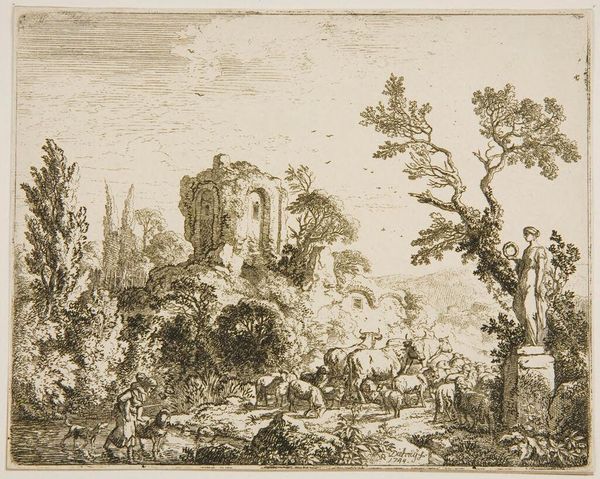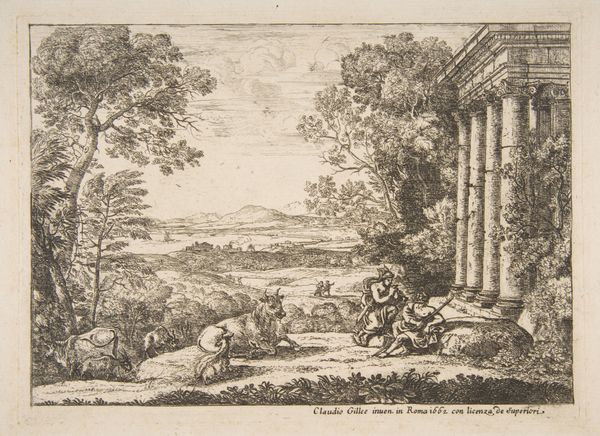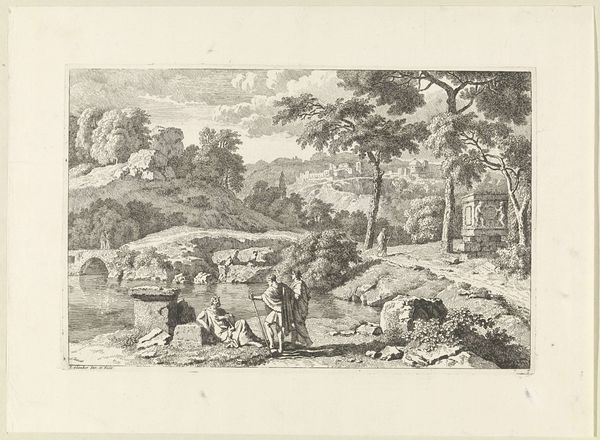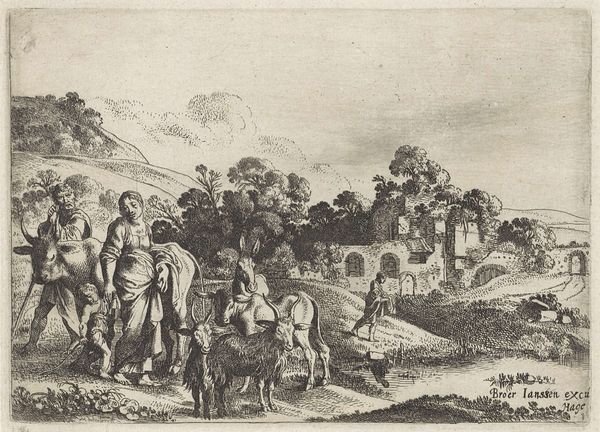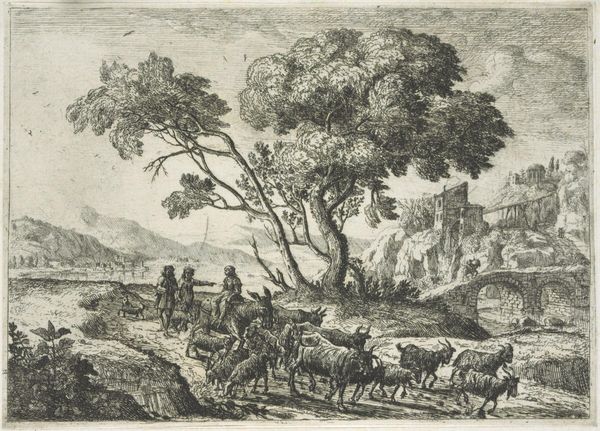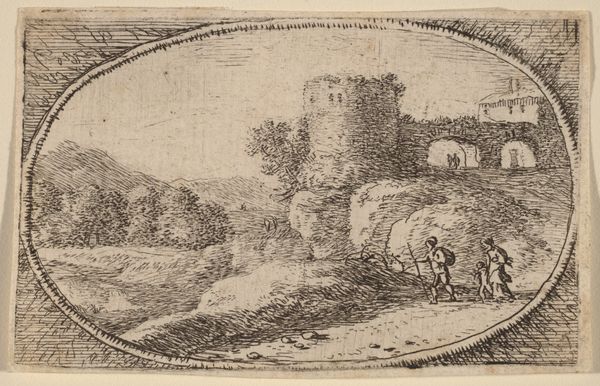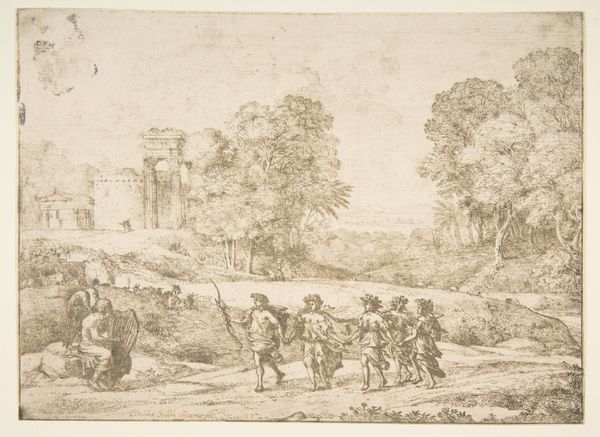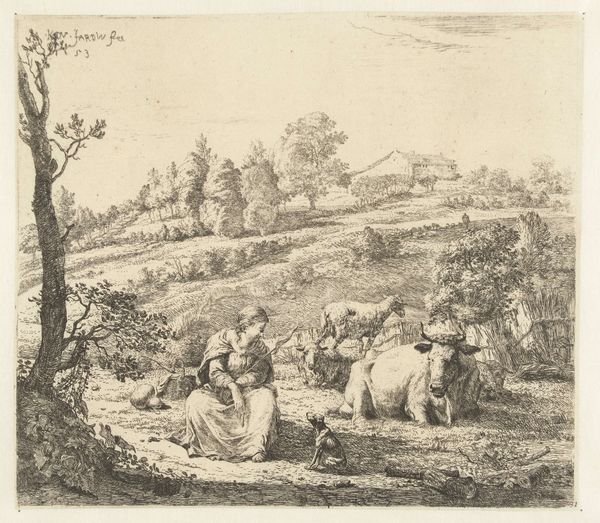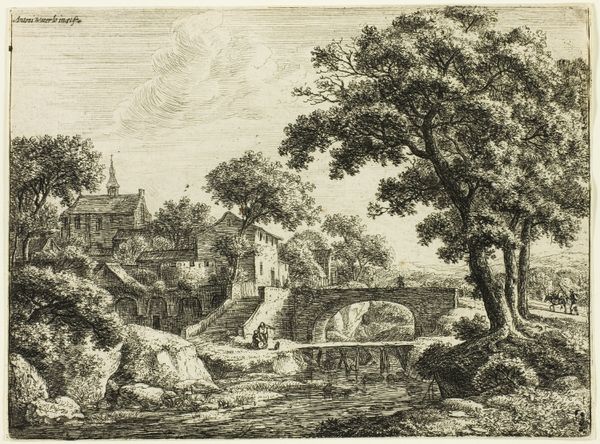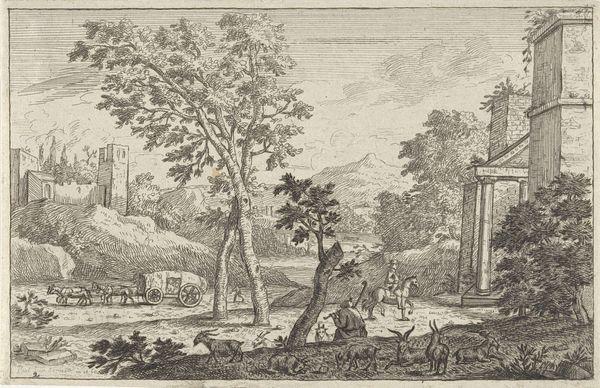
print, etching
#
baroque
#
dutch-golden-age
# print
#
etching
#
landscape
#
genre-painting
Dimensions: 122 mm (height) x 184 mm (width) (plademaal)
Editor: So, we’re looking at “Landscape with Travellers” by Moyses van Wtenbrouck, made sometime between 1595 and 1648. It's an etching. I find it incredibly detailed, but also a bit… somber. What jumps out at you? Curator: For me, it's the process. The etching—the acid, the metal, the labor. These aren't just picturesque travelers; they're participating in an economy that values both agrarian life *and* the craftsmanship needed to represent it. Consider how prints like these circulated—multiplying an image, impacting consumption patterns. It's fascinating. What sort of audience was buying them, and what did possessing such images signal? Editor: So, less about the pretty landscape, more about… how it was made and who got to own it? How does that connect with the subject matter, the travelers themselves? Curator: Precisely. Landscape isn't just scenery, but also real estate, tied up with ideas about ownership, cultivation, and social hierarchy. This landscape is *being used*, crossed, cultivated, it’s less idealized than rendered pragmatic. The print facilitates wider consumption of this idea of 'land' itself. Are these working travellers, or landowners merely passing through? How would that influence the art's cultural context? Editor: I see. It reframes the whole thing. Suddenly, the “everyday” landscape feels political, almost. I always considered the Baroque style removed from such concerns. Curator: Does it, though? Aren't "concerns" like labor relations simply filtered out as irrelevant detail within more standard formal readings of the work? Etchings like these democratized imagery, sure, but by putting nature on the art market as a good, they reinforced those materialist structures. So how can that idea impact on interpretation of other landscape painting or prints, more generally? Editor: I’d never thought of approaching it that way before. Seeing the art object itself as part of the story—not just telling it. That's a great perspective. Curator: It changes our consumption, not just of art but how art drives wider socio-cultural change. Thanks! I will carry it forward in my own exploration of visual culture and modes of creation.
Comments
No comments
Be the first to comment and join the conversation on the ultimate creative platform.
